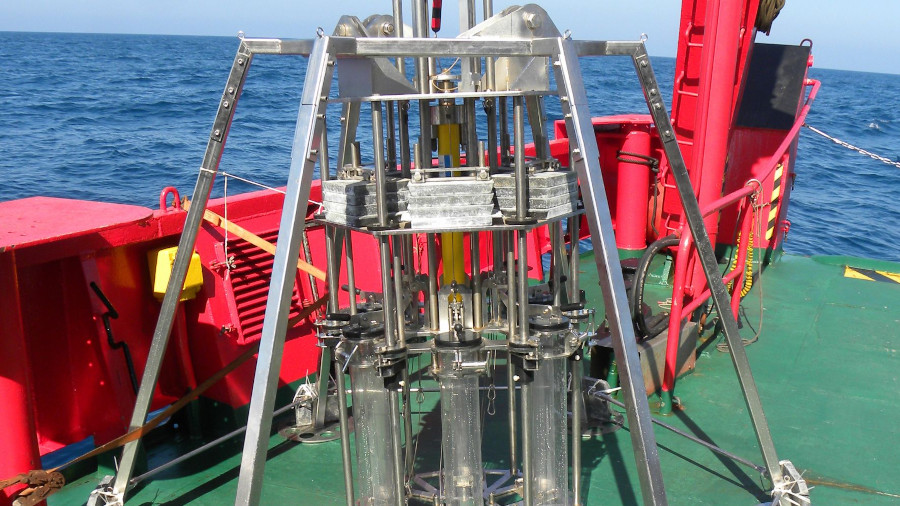A study led by the Spanish Oceanography Institute, with the involvement of the UAB, reconstructs the recent history of marine contaminants such as metals and microplastics in the deep sediments of the Mediterranean and Cantabrian Seas. The industrialisation, construction of dams and production of plastics have left a persistent registry in event the most remote and deepest parts of the coastline.

A research led by the Spanish Institute of Oceanography (IEO-CSIC), with the participation of the Universitat Autònoma de Barcelona and the Institute of Marine Sciences (ICM-CSIC), has reconstructed the history of pollution in the seabed of the Cantabrian Sea and the northwestern Mediterranean over the past centuries.
To carry out this study, published in the journal Science of the Total Environment, sediment cores obtained at depths of between 80 and 1,150 meters were analysed, the different layers were dated, and the contaminants found were also analysed: metals, such as mercury and lead, and microplastics.
The results obtained show that human activity (such as industrialisation, construction of dams and production of plastics) has left a persistent footprint even in the deepest environments far from the coast.
Based on the analysis of metal levels, it was possible to identify the footprint of different activities related to the Industrial Revolution. "The use of steam engines, which used coal as fuel, led to an increase in arsenic levels in the sediment," says Juan Santos, researcher at the Oceanographic Centre of Vigo, IEO, and first author of the study. A subsequent increase in the levels of metals such as mercury and lead was also detected, indicating the development of industrial activity in Spain.
Finding these signs of industrial activity in deep sea sediments far from the coast reminds us that even these deep marine ecosystems are not immune to our actions, warns Joan Cartes, ICM researcher. "We have to see to what extent this impact has affected the marine fauna of these systems, the ultimate goal of the RECOMARES project, which was used to develop these results."
Another human activity that was recorded in the sediment is the construction of dams. Since the 1960s, there is a decrease in the presence of natural elements such as lithium and aluminum, which would be related to a lower fluvial discharge due to the damming of rivers, together with changes in rainfall regimes and the massive occupation of the coastline with various constructions.
The sediments analysed also show the beginning of the use of plastics, which began to appear in layers deposited in the middle of the 20th century. "The history of contamination by microplastics is well recorded in these sediments, probably because their appearance in daily use and industry was more rapid and widespread than that of most metals," the authors point out.
The work also identified, in some of the areas, the use of trawling. The use of this type of nets removes the sediment and generates discontinuities in the record of indicators such as the extinction of radioactive lead, a variable used to date sediments.
The study was developed under the framework of the RECOMARES project (RTI2018-094066-B-I00), funded by the Spanish Ministry of Science, Innovation and Universities.
Reference article:
Santos-Echeandía, J., Bernárdez, P., García Orellana, J., Rodellas, V., Bruach, J.M., Cartes, J.E. 2025. Unravelling the anthropogenic pressures in deep waters of the N Iberian Peninsula in the last centuries through the study of sediment cores. Science of the Total Environment, 975, https://authors.elsevier.com/c/1kr6cB8cd45gp






